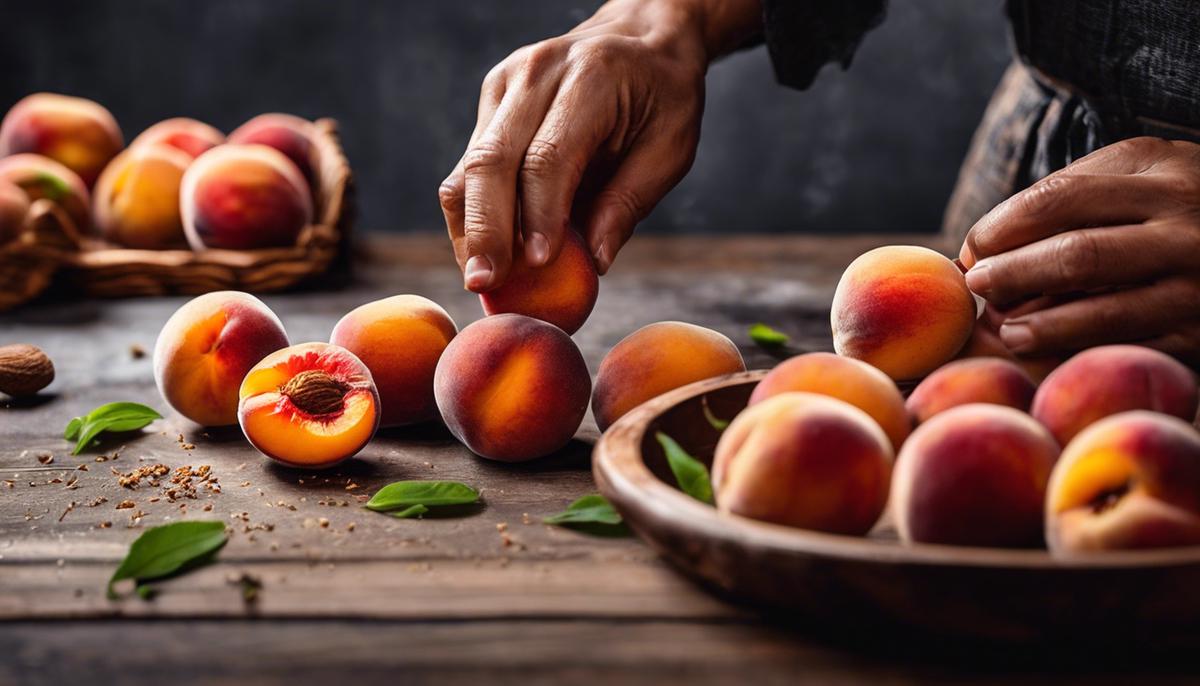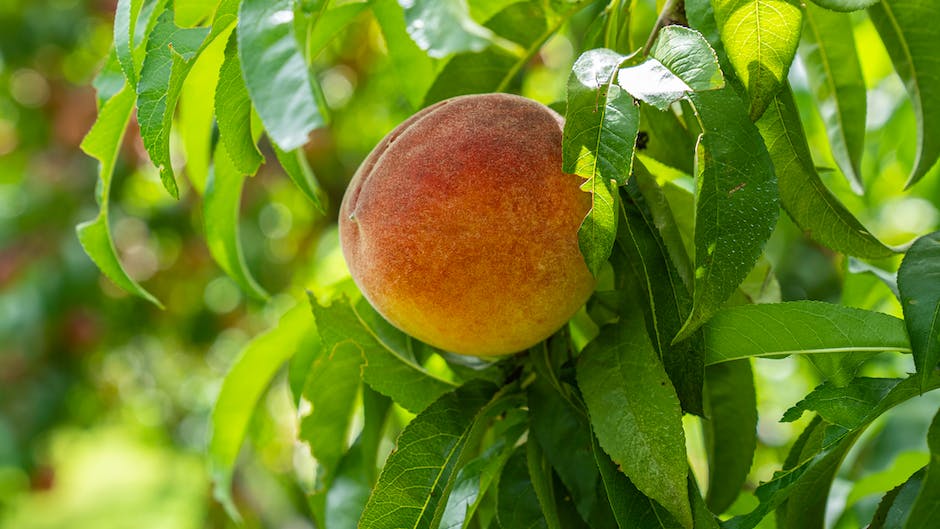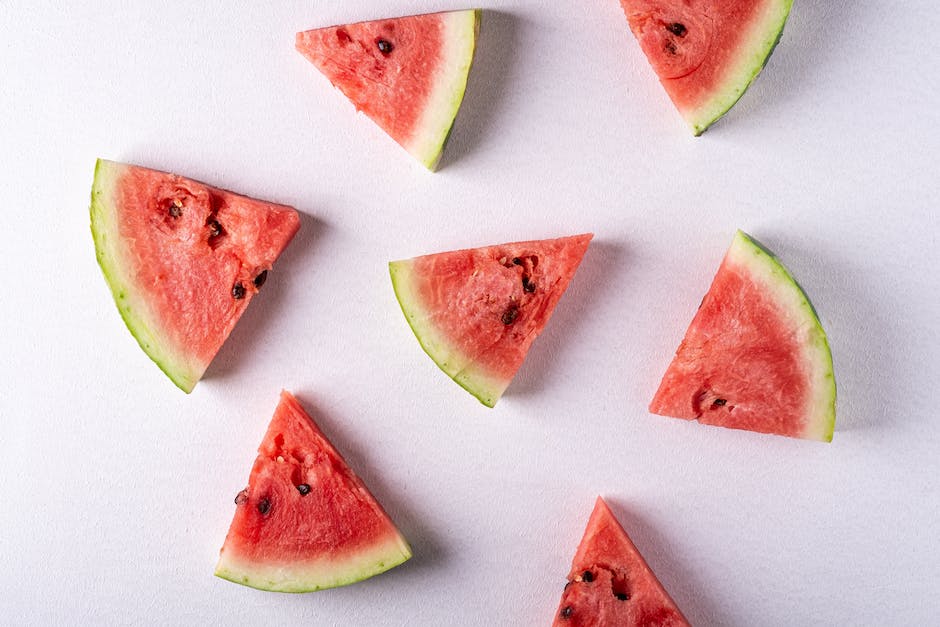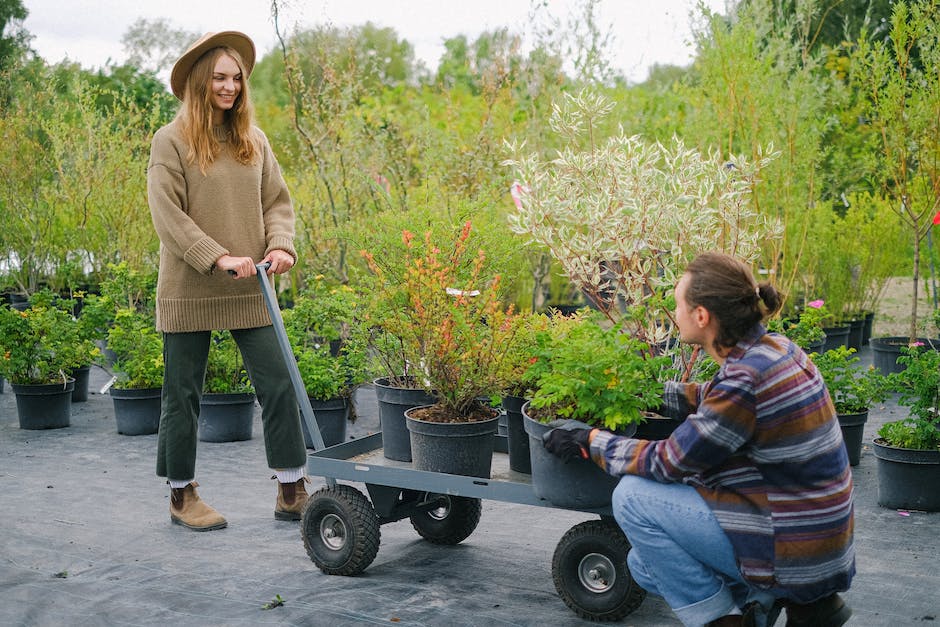Step-by-Step Guide: Growing a Peach Tree from a Pit

Who among us hasn’t enjoyed the lush juiciness of a ripe peach? The richness of taste and the vibrant color can light up any summer day. But did you know that you can breathe new life into your favorite fruit by using its pit? Yes, you can indeed grow a whole new peach tree, right from the very pit that often gets discarded. This process, fascinating and enriching in its own right, entails careful selection and preparation of the peach pit, a stratification process to simulate winter conditions for germination and meticulous planting and caring for the establishing seedling.
Selecting and Preparing the Peach Pit
Expert Guide: Selecting and Preparing the Right Peach Pit for Growth
Hello peach enthusiasts! Or perhaps you’re a gardening neophyte, enamored by the plump peach fruit dangling irresistibly from the tree branches, with dreams of sprouting your very own Peach Tree Empire from that humble pit nestled within.
Step right in! Embarking on this peach-growing journey brings plenty of joy and a dollop of challenge mixed in. And it begins with the task of preparing the perfect peach pit. Let this be your go-to handbook.
When Size Matters
To start with, not just any pit will do. A bigger peach pit often leads to a healthier sapling. When enjoying a succulent peach, take a moment to examine the pit. If your pit is on the smaller side, it might not be the best candidate for a burgeoning peach tree. Larger pits tend to yield stronger saplings. So next time you have a peach, go for the biggest one you can find.
Break the Hard Shell
Once you have selected your Peach Pit of Power (as we’ll call it), you have to prepare it for planting. The pit’s outer shell is considerably hard and must be broken before further processing. But remember, this is surgery level careful! You want to barely crack the shell without causing any damage to the seed inside. A vice can be quite handy for this purpose, but a nutcracker does the job just as well.
Tickling the Dormant Giant
The next step is stratification, a fancy term to describe cozening the hibernating seed into thinking winter has passed. To do this, immerse the freshly-cracked pit in a container of water for about an hour. The soaking softens up the pit and expedites the germination process.
Now, take a damp paper towel and envelop the pit within its cozy folds. This mock winter habitat should go into a sealable plastic bag. Make sure to leave some air inside before sealing it off. Once cozy and comfortable, put the bag in the refrigerator. Don’t forget to make regular checks for mold, and swap out the paper towel if needed.
Leave it Be
Patience is key. A peach pit takes time to grow. Depending on the kind of peach you’re dealing with, it might take anywhere from a few weeks to a couple of months before the pit starts to sprout. Wait for the right time, when the roots are a few inches long. Only then is it ready to be moved into a pot.
So, there you have it! A tried and true roadmap to cultivating your very own peach tree from a simple pit. It might sound a bit laborious, but, oh, the satisfaction when that first green shoot pokes its head from the earth! Now go forth, peach enthusiasts, and wield the artful science of pit-preparation – your Peach Tree Empire awaits.

Stratification Process
Unleashing the Magic of Stratification for Successful Germination
For those in the gardening world, stratification, undoubtedly, ranks as one of the most eventful processes in seed preparation. Here, we’ll dive into the concept further and decipher its importance in promoting germination – an exhilarating part of the hobby we all so deeply relish.
In essence, stratification is Mother Nature’s way of kick-starting the lifecycle of many seeds. It’s an essential period of dormancy that seeds require, during cold winters ideally, to stimulate the onset of germination when spring arrives. While we astutely bypassed nature’s timeline using our handy damp paper towel and plastic bag in the preparatory phase, it’s pivotal to understand that this stratification period is hard-coded in the DNA of many plants.
Seeds, much like us garden enthusiasts, are patient entities. They are designed to withstand unfavorable conditions (think harsh winters) and bide their time until the environment is conducive for growth. The cold stratification process mimics these harsh winter conditions, which, in many cases, is a natural signal for the seeds to awaken from dormancy. The seeds, placed in prolonged cold and moist conditions, are tricked into “believing” winter has passed, and thus begin their germination process.
Here’s where the real magic occurs. When seeds undergo cold stratification, chemical changes start to happen. The seed coat becomes permeable, allowing water to seep in, essentially hydrating the dry tissue within the seed and activating necessary enzymes. Beyond just breaking dormancy, studies have suggested that stratification enhances the seed’s vigor and uniformity during germination. Quite fascinating, isn’t it?
Moreover, stratification is not an arbitrary process. Depending on the type of seed, the stratification period can range anywhere from a few weeks to several months. One must be mindful of this timeframe for successful germination. An overzealous gardener might mistakenly shorten this period, but let’s remember, gardening is a hobby that rewards patience and respect for nature’s timeline.
Now onto the grand finale! After the stratification period, we move onto potting the sprouted pit. The baby plant at this stage needs a cozy, safe habitat to grow, much like a hatchling. But note, while stratification can sound daunting, it’s largely a game of patience and careful observation, with nature doing most of the work.
In conclusion, stratification is far more than mere terminology to be glossed over in gardening manuals. This process aids in fostering healthier and stronger seedlings that have a higher survival probability. A bonus being, it allows us fantastic gardeners to experience the sheer joy and unparalleled sense of achievement from nurturing a life, right from seed to plant. Happy stratifying!

Planting and Caring for the Seedling
So, you’ve mastered the first phases of seed germination, eh? Hats off to you! Now let’s redirect our focus to how to plant that germinated pit and guarantee it flourishes into a mighty plant. It’s indeed a moment of pride. Excitement ripples through your veins while bearing witness to a once-dormant pit sprouting new life. It’s finally time to move forward from that damp paper towel and clear plastic bag stage. This is where your green thumb will truly be put to the test. Ready? Let’s get started.
First off, let’s choose an appropriate potting mix. Yes, the right foundation is crucial here. Always go for a well-draining potting mixture; not too heavy, not too sandy. Why? This assists the delicate, diminutive roots of your sprouted pit to reach out, explore, and firmly establish themselves. With proper drainage, the roots will be free from water-logging and root-rot situations. The potting mix must also be rich in nutrients because your young plant will be needing all the food it can get. Keep an eye out for a mix that is organic, well-composted, and has an adequate blend of essential nutrients to support your growing plant baby.
And now, the big moment! Nests that sprouted pit into the potting mixture. Step meticulously here. Sink a small hole, about 1-2 inches deep, into your potting mix. Carefully place the sprouted pit into the hole with the sprout pointing upwards and gently cover it up with some soil. The tiny protruding sprout will remain above ground while the bigger structure dives deep into the nutrient-rich earth.
Got it planted? Sigh. Pat yourself on the back. Now the real challenge kicks in—the care part, my friend. Your sprouted pit, now a seedling, needs a perfect balance of water and sunlight. Neither too much nor too little. Water the pot thoroughly once and then avoid water-logging; let the pot drain out. Proper hydration maintains the vigor of the seedling, supporting its growth.
Sunlight, our natural supplier of energy, is no exception to our plant’s need. A cozy spot with partial sunlight is what we’re aiming for! Overexposure could drain your sprout’s stamina and energy, while underexposure can suppress its enthusiasm to grow. Seedlings in particular tend to bend towards the direction of the light, so rotating the pot regularly will help provide even exposure.
On the nutritional front, we’ve covered the basics with a nutrient-rich potting mix, but the addition of a slow-release fertilizer will replenish the nutrients as the plant consumes them. Apply according to the package instructions and remember – a little goes a long way.
Let’s not forget our plant also needs fresh air, so ensuring we have proper ventilation around the plant is crucial. Free movement of the air around the plant will save our young one from fungal infections.
Finally, keep an eye, and let your intuition do some work too. Monitor your seedling for any changes – be it in their color, texture, growth pattern, or any indication that might help you understand its requirements better. And on this winding pathway of nurturing, you are sure to experience a learning, unlearning, and evolving journey. Just like your sapling. Only then can it testify to your consistency, patience, and the green thumb you own. And you both grow alongside, fostering one another, flourishing, thriving.

The journey from a humble peach pit to a bountiful peach tree can be a rewarding exercise steeped in patience and care. By selecting and prepping the pit, stratifying it to induce germination, and planting and nurturing the emerging seedling, you can create your very own oasis of peach trees. It’s about giving nature a helping hand and partaking in the cycle of growth and regeneration. So, the next time you enjoy a delicious peach, remember – it’s not just a fruit; it’s a promise of a tree waiting to grow, a tree that can bear countless peaches in its lifetime, all from a single pit.



